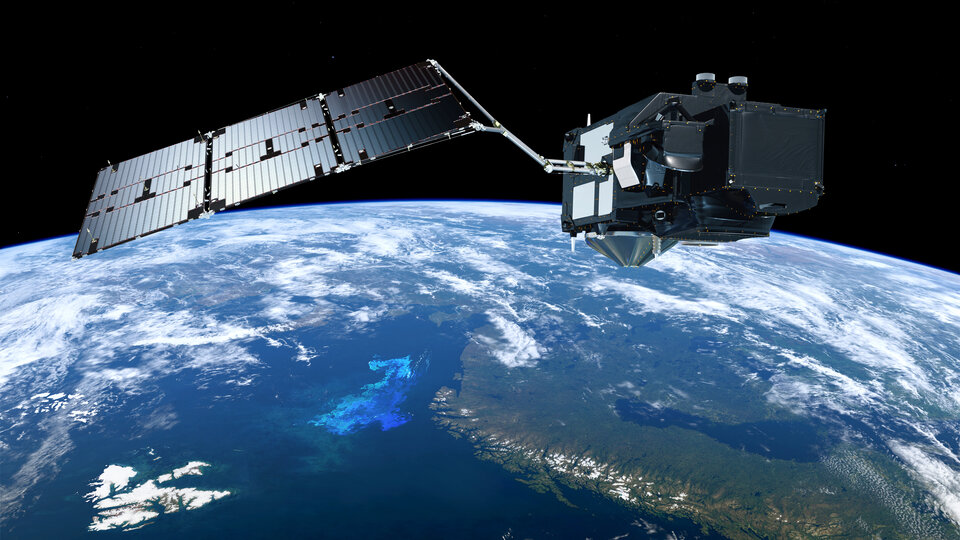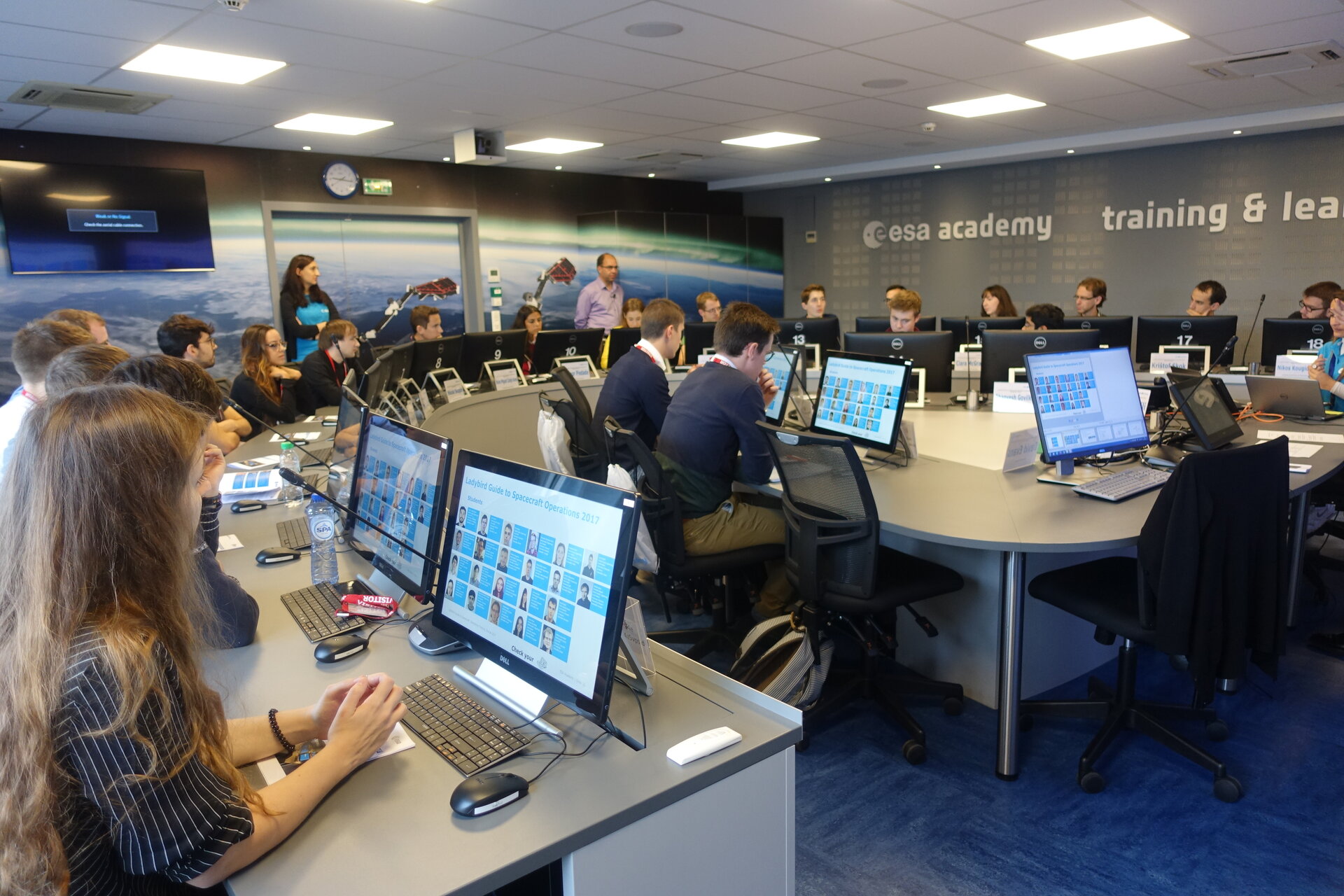Student applications now open for first ESA Academy’s Earth Observation Satellite System Design Training Course
ESA’s Education Office is looking for 30 highly motivated engineering Master’s and PhD students to participate in the Earth Observation Satellite System Design Training Course 2018. This pilot Course will be held from 1 - 5 October in the new ESA Academy Training and Learning Facility (TLF) in ESA’s ESEC-Galaxia, Belgium.
Earth Observation (EO) satellites are a key to guiding the World population towards a sustainable society. They allow the monitoring of vegetation and agriculture to safeguard the preservation and usage of our limited resources; provide rapid assessment of damages in case of disasters such as flooding, and enable efficient assistance measures; make it possible to gain better understanding of urban development; and allow the monitoring of meteorological and environmental parameters essential to a thorough understanding of the evolution of Earth’s global-scale dynamics, i.e. its future climate.
For all these reasons, EO satellite missions constitute a major part of ESA’s activities. In fact, a significant portion of ESA’s annual budget is dedicated to EO satellite missions. ESA is also the main actor for the implementation of the current Copernicus Programme in cooperation with the European Commission, the world’s largest civil EO programme, which aims to provide Europe with independent access to Earth remote sensing data.

During the course, students will become acquainted with the end-to-end design of an EO satellite system. They will start with requirements definition based on mission objectives, progressing to orbit trade-offs and design of the payload instruments (microwave and optical), followed by the satellite design, ground segment architecture and operations, verification & testing, all the way through to in-orbit testing!
The students will be able to put into practice what they learn through group project composed of a challenging series of group exercises which form a step-by-step observation system design project. Each student will be in charge of a given engineering field, including system engineering lead, microwave instrument sizing, optical instrument sizing, satellite design and ground segment & operations concepts. They will collaborate with their group to come up with a simple but realistic EO system design. Course trainers will be on hand to share their knowledge during group project.
The Earth Observation Satellite System Design Training Course 2018 has been developed by ESA’s Education Office, together with ESA EO specialists and members of ARES, the Association of Retired ESA Staff. All the trainers delivering lectures have extensive experience in ESA EO system development, giving students a taste of what it is like to really work in the space sector.
Preliminary schedule:
| Day 1 |
Introduction to Earth Observation Satellites and programmes Observation to System requirements Orbit selection for EO missions Group Project: Orbit selection |
| Day 2 |
Risk Management & Technology Development Microwave payload design Group Project: Microwave instrument sizing |
| Day 3 |
Optical payload design Group Project: Optical instrument sizing & satellite requirements definition |
| Day 4 |
Payload accommodation and satellite design Ground segment and operations concepts Assembly, Integration & Verification (AIV) activities, launch and in-orbit verification Applications based on EO data Group Project: Satellite design & ground segment/operations concept |
| Dau 5 (half day) | Group Project: System design wrap-up and presentation |

Who can apply?
In order to participate, students must fulfil the following eligibility criteria at the time of application:
- be aged between 18 and 32;
- be a citizen of an ESA Member or Associate State;
- be enrolled as a full-time Master’s or PhD student in a university (not graduating before the training course);
- be studying for an engineering degree, and have a solid mathematics and physics background.
- Exceptions may be made for students enrolled in a scientific degree, provided a sufficient level of engineering knowledge and a clear interest in space engineering-related activities is shown.
The selected students will be sponsored by ESA. This will cover accommodation and meals as well as up to 200 Euros for travelling to Transinne, Belgium.
How to apply:
All answers and documents should be in English (except academic records if not available).
- Fill in the application form;
- Upload a CV (PDF, maximum 2 pages);
- Upload a formal recommendation letter (PDF, maximum 1 page, including signature, no images) from a university professor or academic supervisor at current university;
- Upload a copy of academic records (PDF, in English, with the university stamp);
- Upload a motivation letter (PDF, maximum 1 page, no images). Be sure to clearly state your first, second, and third choice for your role in the group project from the following tasks:
- System lead engineer
- Microwave payload engineer
- Optical payload engineer
- Satellite engineer
- Ground segment & operations engineer
The deadline for applications is 13 August 2018.
For more information, please contact esa.academy @ esa.int.


